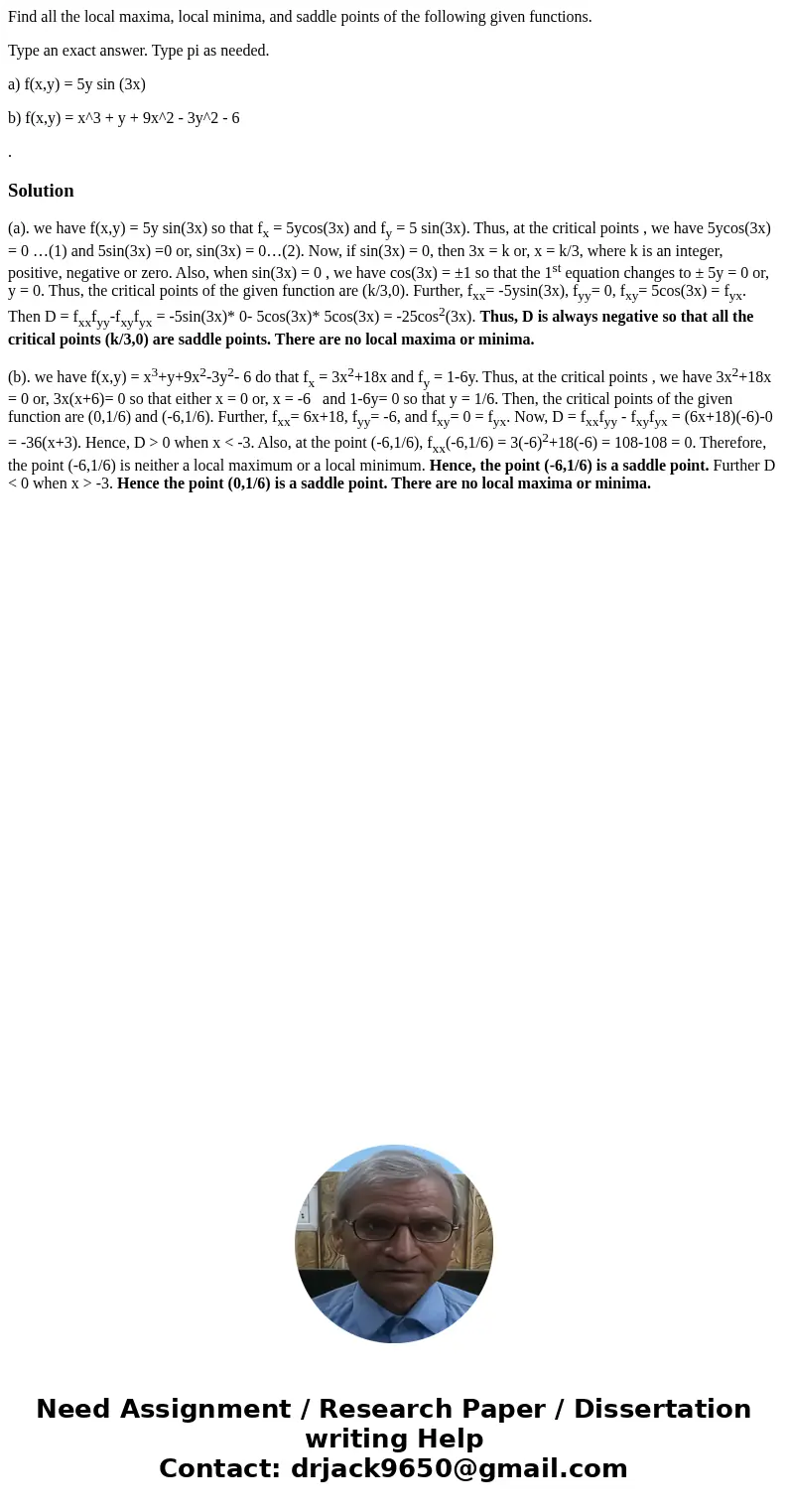Find all the local maxima local minima and saddle points of
Find all the local maxima, local minima, and saddle points of the following given functions.
Type an exact answer. Type pi as needed.
a) f(x,y) = 5y sin (3x)
b) f(x,y) = x^3 + y + 9x^2 - 3y^2 - 6
.
Solution
(a). we have f(x,y) = 5y sin(3x) so that fx = 5ycos(3x) and fy = 5 sin(3x). Thus, at the critical points , we have 5ycos(3x) = 0 …(1) and 5sin(3x) =0 or, sin(3x) = 0…(2). Now, if sin(3x) = 0, then 3x = k or, x = k/3, where k is an integer, positive, negative or zero. Also, when sin(3x) = 0 , we have cos(3x) = ±1 so that the 1st equation changes to ± 5y = 0 or, y = 0. Thus, the critical points of the given function are (k/3,0). Further, fxx= -5ysin(3x), fyy= 0, fxy= 5cos(3x) = fyx. Then D = fxxfyy-fxyfyx = -5sin(3x)* 0- 5cos(3x)* 5cos(3x) = -25cos2(3x). Thus, D is always negative so that all the critical points (k/3,0) are saddle points. There are no local maxima or minima.
(b). we have f(x,y) = x3+y+9x2-3y2- 6 do that fx = 3x2+18x and fy = 1-6y. Thus, at the critical points , we have 3x2+18x = 0 or, 3x(x+6)= 0 so that either x = 0 or, x = -6 and 1-6y= 0 so that y = 1/6. Then, the critical points of the given function are (0,1/6) and (-6,1/6). Further, fxx= 6x+18, fyy= -6, and fxy= 0 = fyx. Now, D = fxxfyy - fxyfyx = (6x+18)(-6)-0 = -36(x+3). Hence, D > 0 when x < -3. Also, at the point (-6,1/6), fxx(-6,1/6) = 3(-6)2+18(-6) = 108-108 = 0. Therefore, the point (-6,1/6) is neither a local maximum or a local minimum. Hence, the point (-6,1/6) is a saddle point. Further D < 0 when x > -3. Hence the point (0,1/6) is a saddle point. There are no local maxima or minima.

 Homework Sourse
Homework Sourse